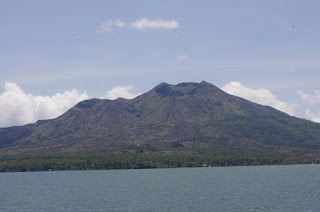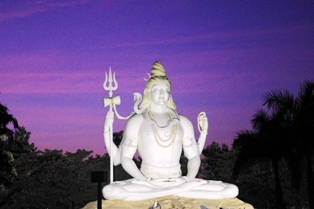Visit to Bali Aga (Native Bali)
What if you slept? And what if in your sleep, you dreamt?
And what if in your dream, you went to heaven and there plucked a strange and
beautiful flower? And what if, when you woke, you had the flower in your hand?
Ah! What then?.... Samuel Taylor Coleridge
There are two ways to be fooled. One is to believe what isn’t
true; the other is to refuse to believe what is true. Soren Kierkegaard.
A very queer incident happened with me when I visited a
small, ancient and beautiful village near Kintami Volcano in Bali.
At the foot of mount Abang, in Bali, is a village called
Terunyan. It’s a beautiful serene village located on the eastern side of the
smallest active volcano in Batur.
Terunyan, means in Bali aga (native) fragrant tree. As the village
is surrounded by menyan (frangrance) and taru in Sanskrit is tree.The place is thus called Terunyan. The main
occupation of the locals here is fishing and making bamboo handicrafts. The
village still has not been marred by modernization, though there is electricity
in every house and few of them also have TV sets, but that’s most of it. The
rapid race of being connected and connectivity has not caught up with the
locals and they seem to be very happy with it. The houses are typically
Balinese style; the other uniqueness that they practice is, in cremating the
dead.
According to Terunyan society, they do not cremate nor do they
bury their dead. Instead they cover the body completely with white cloth and lay
their dead on the ground with fenced Ancak Saji (woven
bamboos), which appear like small thatched bamboo houses, at the foot of Menyan
taru (fragrant tree grove.)This practice
is an ancient one, started around 11th
century. The history of Bali by 11th century was deeply
influenced by Hindu and Javanese culture. The medieval history of Bali
highlights the several phases of Bali and Java conquering each other till Bali
was occupied by the Dutch, in 1597, thus started the Bali colony.
Now in Terunyang, the place where the
villagers keep their dead can only be approached by boat.
It takes around half hour to reach the
place by motor boat and around sixty minutes by rowing. Generally curious tourists
visit the place in day time where you could still get the eerie feeling
immediately by seeing the macabre collection of bones and skulls lying on the
stone platform and the surrounding areas.
There are in all eleven Ancak Saji’s
(woven bamboo houses) to rest the dead of Terunyan. One can see the bodies in
their various state of decomposition, though the peculiar thing is you won’t be
bothered by any smell or stench. That generally is supposed to come from the
decomposed bodies. This is because of the nature and its surroundings of
fragrant trees.
Whenever
a new dead body arrives, the oldest decomposed body from the lot of eleven is
removed, the skull is put on the
platform and the rest of the bones and body mass if any is put in a bamboo
basket and left there.The new dead body is completely wrapped in
a white cloth and laid on the ground, an ancak saji is then fenced and it is
also covered with a white cloth.
I travelled the offbeat road and visited
the place when dusk was setting in. The place was already under dark shadows,
the ambience though extremely peaceful was kind of an ominous one. From my last
encounter on ghost sighting, I was carrying an EMF meter (electro magnetic
meter.)
The time was some way after six pm, I had
travelled by a rowing boat, the boat-men had excused themselves for a smoke and
my guide, Michael and I, entered the area. The site initially takes your breath
away, as a skull, welcomes you, then a row of skulls and long bones are stacked
on a platform, at the foot of the trees. As you climb the steps, you see the
woven bamboo thatched houses, and when you take peek, either a decomposed body
with its shining white teeth and black round eyeballs would be staring back at
you. It seemed that the dead continue to converse with the living. Ghosts were
not the norm. They were the ones, who for one reason or another, still had one
foot in this world and could not seem to shake it free. On the other hand these
bodies there seemed to me to rest in a peaceful slumber, but if any living
visited, as entertaining guest, these bodies, said hello in their macabre
decomposed dead form.
My guide did not wish to spend any more
time there, and so we had to make a retreat after spending just forty minutes.
It was a worthy experience for me, as I for the very first time realized the
famous hindu teaching of Bhagwath gita- “nainam
chindanti shastrani, nainan dahati pavakh, na chainam kledayanti apo, na
sosyati marutah.”
This body
that one is born with would pass through different stages and finally perish,
but the soul can never be cut into pieces by any weapon, nor burned by fire,
nor moistened by water, nor withered by wind.







Comments
Post a Comment